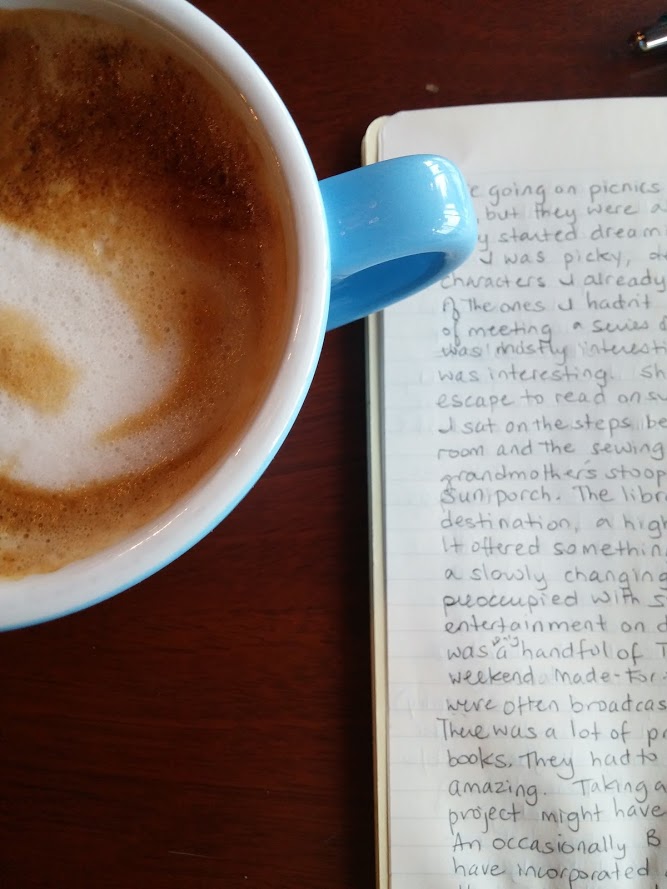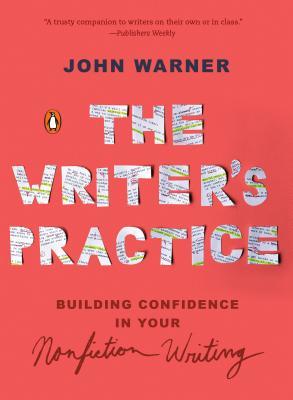On the surface, there is nothing remarkable about this writing book by a McSweeney’s-Editor-at-Large; it’s a slim volume with predictable subject headings (Getting Started; Introduction; Skills Drills; Analytical Writing; Research and Argument; Other Writing Experiences, and This is the End).
But what I particularly value about this book is one of the underlying tenets, which subtly but meaningfully impacts every aspect of John Warner’s instruction: that one should think more about the experience of writing than about the exercise of writing. This might sound obvious, but it reaffirms the need to build a connection between your writing self and your work.
It’s possible to complete a set of exercises without truly engaging with – experiencing – the work; prioritizing the experience subtly shifts every part of the process. Thinking about every draft as an experience even allows you to adjust your expectations (so you can temper your disappointment over what Anne Lamott calls those “shitty first drafts” before you even begin to write).
Another writer might have put something like this in a textbox, but Warner doesn’t even elaborate on it. Similarly, he doesn’t bold his reminders about the importance of establishing one’s audience, he simply includes notes about an exercise’s audience in every instance.
He’s like the parent who schools by example rather than nagging. Reminding writers of the relationship between writer and reader, at every step of the process, makes sense; consistently keeping your audience in mind reduces the need for rewriting and it lightens the editorial load as you move closer to publication.
Another thing that I appreciate about Warner’s approach is the balance he strikes in his tone: he’s instructive without being overly didactic, personable without being overly informal. Every book about writing includes some commentary on procrastination (go figure!) and Warner doesn’t fall back on snide parenthetical remarks; he does contribute some personal admissions, but the bulk of his time is spent on considering how and why many writers’ fears result in last-minute or late submissions. (In his experience, 80% of writers admit to struggling with procrastination, despite recognizing that it’s a destructive pattern.) He lands between finger-wagging and coddling, and it suits me perfectly.
And, finally, the importance of Prewriting in Warner’s process satisfies me immensely. (It’s the first step—followed by Drafting, Revision, Editing and Polishing.) Many writers acknowledge this part of the work, which can overlap with discussions of how to increase receptivity, nourish creativity and counter resistance. But there is a matter-of-factness to Warner’s instruction: “A deeply researched piece may call for weeks of work in the prewriting stage and require a detailed outline before even beginning.” And he combines this with a generosity of spirit: “Procrastination is prewriting. Provisioning (Coca-Cola and Peanut M&Ms) is prewriting. So is reading, research, planning, thinking.” And, also, with advice: “This doesn’t mean prewriting has to be haphazard, though. A planned, deliberate approach to the prewriting period helps make the drafting process go more smoothly.”
The Writer’s Practice is also highly adaptable; it could be used in a classroom setting and by a solitary soul in their garret room/back seat of the bus/employee lunchroom/home office. There are even multiple endings (which is to say, different ways of structuring the content to suit different students’ priorities)!
Great stuff for writers.
John Warner. The Writer’s Practice: Building Confidence in Your Nonfiction Writing. New York: Penguin Books, 2019.

